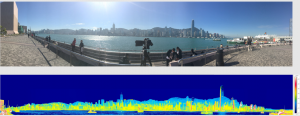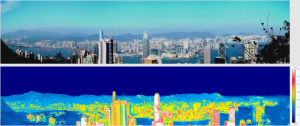Why Kowloon keeps getting hotter: rethinking urban climate solutions
GA, UNITED STATES, June 16, 2025 /EINPresswire.com/ -- Urban warming and humidifying are intensifying in densely built areas like Kowloon, Hong Kong, despite decades of targeted interventions. A new study asks a critical question: why have conventional strategies—ranging from enhanced urban ventilation to building efficiency programs—failed to curb this trend? By analyzing long-term climate data, wind patterns, and the city's architectural form, researchers identified the underlying culprit: Kowloon's dense, high-rise structure and its disruption of natural air circulation. The study challenges conventional wisdom, revealing that piecemeal solutions are insufficient in the face of complex urban systems, and calls for a bold, city-scale rethinking of climate-responsive design.
Kowloon stands as one of the world's most scrutinized urban climate zones—yet it continues to heat up. Since the 1960s, both temperature and humidity have climbed steadily in the district, with evidence pointing to urban morphology, rather than global climate change alone, as the key driver. Standard mitigation tactics, such as creating ventilation corridors and promoting energy-efficient buildings, have been outpaced by the area's vertical sprawl and heat-trapping infrastructure. The intertwined effects of anthropogenic heat, solar radiation, and obstructed airflow have rendered many interventions inadequate. Given these persistent challenges, a more integrated, multi-dimensional approach to urban climate research is urgently needed.
In an editorial published in July 2024 in City and Built Environment, researchers from the University of Hong Kong, Zhejiang University, and Virginia Tech explored why urban warming and humidifying trends remain unchecked in Kowloon. By combining real-world climate data with simulations—such as a "stone forest" mimicking high-rise density—and advanced modeling, the team uncovered how urban structure and wind dynamics uniquely shape thermal conditions in dense cities. Their findings advocate a transformative shift in urban climate thinking: from isolated technical fixes to a system-of-systems strategy that considers the city as a holistic, interactive climate entity.
The study delves into the mechanics behind Kowloon's stubborn heat problem. Researchers discovered that the built environment's thermal inertia—especially that of tall buildings—enables heat to be stored during the day and slowly released at night, sustaining high temperatures around the clock. Using a simulated stone forest, the team demonstrated that even without human-generated heat, compact and dense formations absorb and retain significantly more heat than their low-rise counterparts. Another surprising revelation: calm winds aren't the only threat. Under certain conditions, mountain winds from the northeast can create a 'thermal dome' effect, trapping heat over the city. These findings suggest that Kowloon's overheating stems not only from human activity but from how buildings, topography, and atmospheric flows interact. Without a radical redesign of city form and function, the study concludes, existing cooling measures will remain inadequate in high-density urban environments.
For too long, we've treated urban climate as a patchwork of technical challenges—fixing one building, one street at a time. But cities are complex organisms. Unless we address how form, flow, and function work together—from building materials to wind patterns—we'll be stuck treating symptoms instead of solving the problem. It's time to embed climate logic into every layer of city design.
The implications of this study go far beyond Kowloon. As cities worldwide expand vertically and face intensifying heatwaves, the findings offer a blueprint for more sustainable urban growth. The researchers urge policymakers, architects, and planners to adopt a system-of-systems (SoS) approach that unites climate science, urban planning, and infrastructure design. By doing so, cities can escape the cycle of rising temperatures, growing energy demands, and escalating emissions. Without bold, city-scale interventions, the study warns, the path toward climate resilience and sustainable urban living may remain out of reach.
References
DOI
10.1007/s44213-024-00031-6
Original Source URL
https://doi.org/10.1007/s44213-024-00031-6
Funding information
This editorial was supported by two RGC research grants (no. E-HKU702/17 and no. 17202618).
Lucy Wang
BioDesign Research
email us here
Legal Disclaimer:
EIN Presswire provides this news content "as is" without warranty of any kind. We do not accept any responsibility or liability for the accuracy, content, images, videos, licenses, completeness, legality, or reliability of the information contained in this article. If you have any complaints or copyright issues related to this article, kindly contact the author above.


